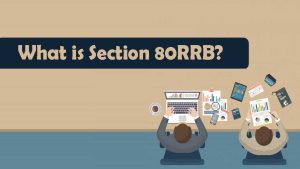A Complete guide
The IT Department of Income Tax classified taxpayers on the grounds of income, the origin of income, and several other considerations to ensure simple enforcement. Taxpayers with revenue from diverse groups are also expected to download and fill out separate income tax return forms. The ITR-2 Form is for individuals and HUFs who do not have an occupation or business.
Who is eligible to file ITR 2
ITR Type 2 is for individuals and HUFs who earn revenue rather than income through “Business or Profession Gains and Profits.” Individuals with revenue from the below sources are also required to file Form ITR 2:
- Salary/Pension income.
- House Property Income, (can be earnings from more than one residential property)
- Capital gains/loss revenue on investment/property purchases, both short-term and long-term.
- Profits from other sources, like the lottery, win profits on racing horses, as well as other legitimate gaming practices.
- Foreign Assets/Foreign Sales.
- Earning more than Rs 5000 in agricultural revenue.
- A Non-Resident & RNOR.
In ITR-2, a director of any firm and a person who is investing in a company’s unlisted stock shares will be expected to file their returns.
Read – Why income tax return its important?
Who cannot file ITR 2?
- Any individual or HUF that has earnings from business or profession.
- Individuals who’ve been qualified to complete the ITR-1 Form.
Major changes in ITR-2 for AY 2020-21
- Except in the event of gross income under Rs 50 lakh, RNORs, and non-resident persons must file their return with ITR-2.
- The taxpayer must reveal (a) the sum of cash deposits in the current bank accounts in excess of Rs 1 crore, (b) expenses accrued in excess of Rs 2 lakh for foreign travel, (c) expenses incurred in excess of Rs 1 lakh for electricity.
- In ITR-2, residents who hold more than one household property should also file their income tax return.
- For resident persons with a gross income above Rs 50 lakh, ITR-2 continues to apply.
- ITR-2 should not be used by any individual taxpayer who has revenue from industry or occupation.
- The ‘company form’ must also declare whether a person is a director of a firm or maintains unlisted stock investments.
- In the event of short-term or long-term capital gains through the sale of property or residential or commercial building, or both, it is important to include the buyer’s information, i.e. name, PAN or Aadhaar, ownership share of an individual in percentage, and address.
- Different Schedule 112A for the measurement of long-term capital gains from the selling of STT-liable stock shares or corporate trust units.
- A taxpayer must provide the specifics of ‘all other revenue’ under ‘income from other sources’.
- The specifics of the deductions must be given against ‘profits from other means.’
- Under section 80EEA and section 80EEB, the ‘Schedule VI-A’ for tax deductions is revised to include a deduction.
- The specifics of the ‘capital gains’ income and’ dividend ‘income must be given in the case of a corporate trust or pension fund.
- Information of the applications for tax refunds relating to savings or payments or costs accrued between 1 April 2020 and 30 June 2020.
- While offering bank account information, if a taxpayer chooses several bank accounts for a reimbursement credit, the IT department can choose whatever refund processing account.



